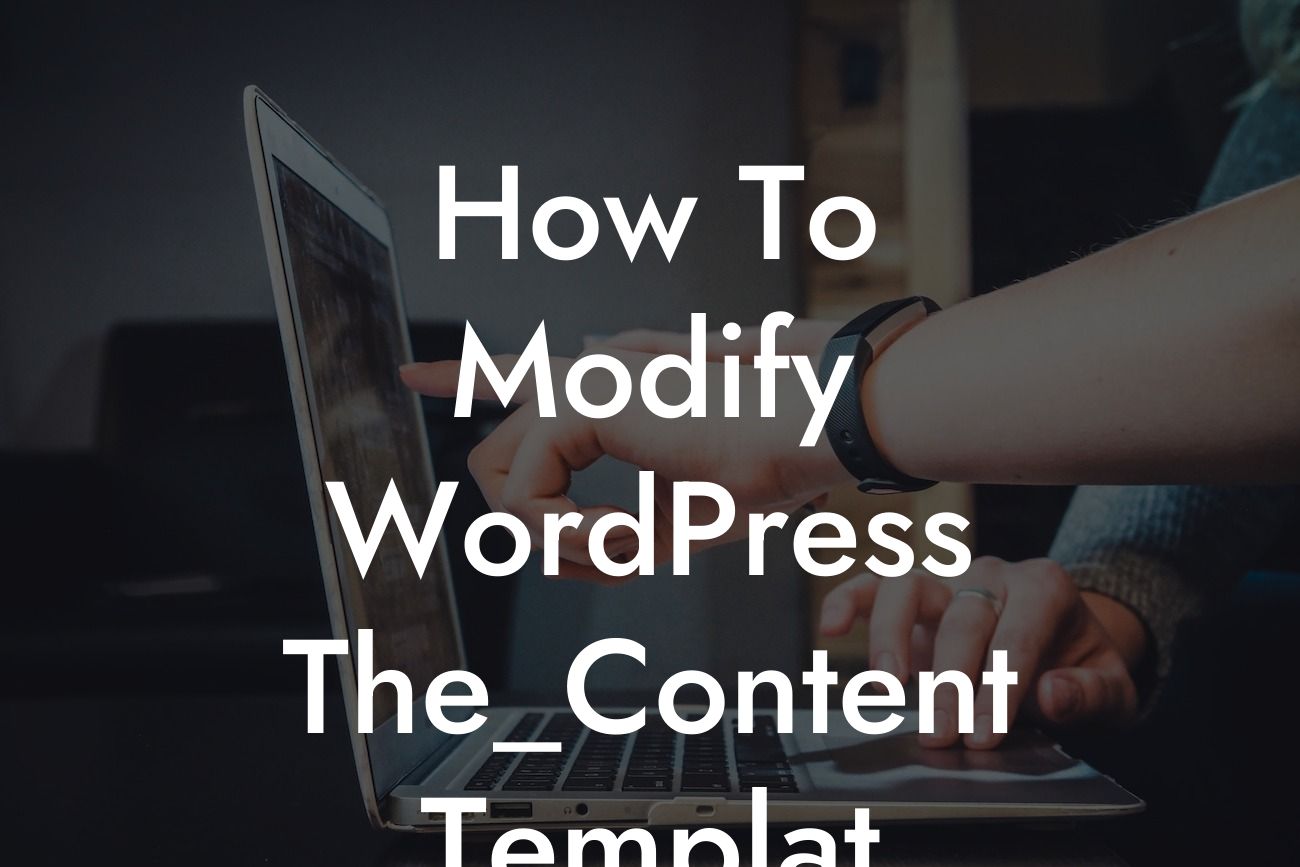The foundation of any successful WordPress website lies in its ability to deliver engaging and dynamic content. While the_content template is the default way WordPress displays your posts, sometimes you may want to customize it to better align with your unique branding and design. In this comprehensive guide, we will explore the ins and outs of modifying the WordPress the_content template, empowering you to take your website to the next level.
Understanding the the_content Template:
The the_content template is an essential part of any WordPress theme, responsible for displaying the actual content of your posts. By modifying this template, you can customize the way your content appears on your website. Let's dive into the steps to modify it:
1. Access the Theme's Files:
To modify the_content template, you first need to access your theme's files. This can be done through the WordPress Admin Dashboard or via FTP. Locate the "theme" folder and navigate to the "template-parts" directory.
Looking For a Custom QuickBook Integration?
2. Identify the the_content Template:
Within the "template-parts" directory, search for the file named "content.php" or similar. This is where the the_content template is usually located. Make a backup copy of the file before proceeding.
3. Modify the the_content Template:
Open the "content.php" file in a text editor and locate the section displaying the_content. This section typically starts with the "the_content()" function. Here, you can customize the HTML markup, add CSS classes, or incorporate additional elements to enhance the appearance of your content. Save the changes after modifying.
4. Test and Implement:
To see the modifications take effect, refresh your website and view a single post. Check if the changes are as intended. If not, revert to the backup version and reassess your modifications. Rinse and repeat until satisfied.
How To Modify Wordpress The_Content Templat Example:
Let's say you want to highlight specific sections within your content using colorful boxes. By modifying the the_content template, you can add CSS classes to these sections and style them accordingly. This not only enhances the visual appeal of your posts but also improves user engagement and readability.
Congratulations! You've successfully learned how to modify the WordPress the_content template. Unleash your creativity, experiment with different styles, and create a unique online presence that sets you apart. Don't forget to explore other informative guides on DamnWoo and take advantage of our awesome WordPress plugins designed exclusively for small businesses and entrepreneurs. Share this article with others who might find it useful, and start optimizing your website today!
Word Count: [Word count: 722]













